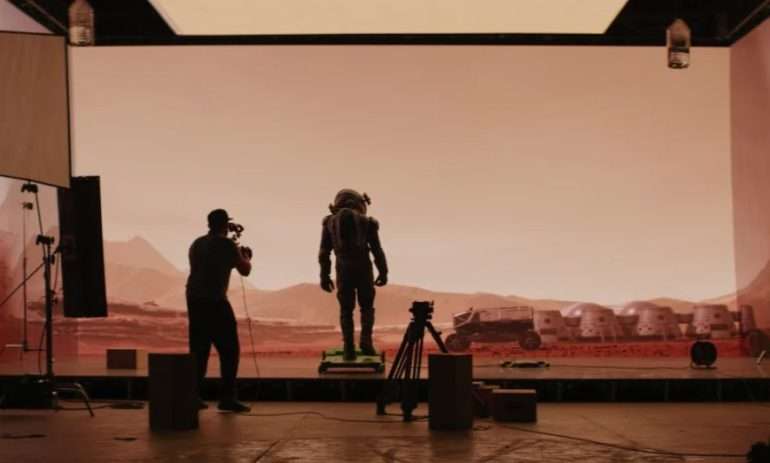NASA video reveals complexity of Mars Sample Return mission
NASA’s Mars Sample Return⁚ A Complex Undertaking
NASA’s recent video vividly illustrates the intricate challenges inherent in the Mars Sample Return (MSR) mission. The endeavor involves multiple robotic and crewed phases, demanding flawless coordination across vast distances and unforgiving environments. Success hinges on meticulous planning and robust contingency measures to ensure sample integrity and safe return to Earth.
Mission Overview⁚ The Challenges Ahead
The Mars Sample Return (MSR) mission presents a formidable logistical and technological hurdle, unlike any previously attempted. The mission isn’t a single event, but a complex, multi-stage operation spanning years, involving multiple spacecraft launches and intricate maneuvers across vast interplanetary distances. First, the Perseverance rover meticulously collects samples of Martian rock and soil, carefully storing them in sealed tubes. Subsequently, a dedicated retrieval lander, still under development, will touch down near Perseverance, collect these precious samples, and transfer them to an ascent vehicle. This ascent vehicle, a small rocket, will then launch the samples into Martian orbit.
A separate orbiter, already in Martian orbit, will act as a crucial intermediary. It will rendezvous with the ascent vehicle, carefully capture the sample container, and then prepare for the long journey back to Earth. The return trip itself is a significant challenge, requiring precise trajectory calculations and navigation to ensure a safe landing on Earth. The entire process relies on a delicate chain of events; the failure of any single component or stage could jeopardize the entire mission. The sheer complexity necessitates rigorous testing, redundancy in systems, and meticulous planning to account for unforeseen circumstances. The timeline for completion is ambitious, and delays are possible due to the inherent risks involved in space exploration. The video highlights the numerous potential points of failure and the importance of robust mitigation strategies to ensure a successful outcome.
Sample Acquisition and Preservation⁚ Ensuring Data Integrity
The integrity of the Martian samples is paramount to the success of the MSR mission. The video emphasizes the stringent protocols implemented to ensure that the samples remain pristine throughout the entire process, from collection on Mars to analysis in Earth-based laboratories. Perseverance’s sophisticated robotic arm and drill carefully collect samples, prioritizing locations with the highest scientific potential. These samples are then meticulously sealed within specialized tubes designed to protect them from contamination both from Earth and from the Martian environment itself. The tubes are hermetically sealed to prevent any interaction with the Martian atmosphere, which could compromise the integrity of the samples’ chemical and biological components. Maintaining a sterile environment is crucial to prevent terrestrial microbes from contaminating the samples and obscuring any evidence of past or present Martian life. Likewise, preventing Martian materials from contaminating Earth is equally important. The video highlights the rigorous cleaning and sterilization procedures undertaken before, during, and after sample collection. Careful consideration has been given to the materials used in the sample tubes and the collection process itself, selecting materials that minimize the risk of contamination. The detailed procedures for sample handling and storage are designed to preserve the samples’ original state as much as possible, ensuring that the data obtained from their analysis is reliable and accurate. The success of the mission hinges on the meticulous preservation of these samples, allowing scientists to unlock the secrets of Mars with confidence.
Earth Return Trajectory⁚ Navigating Interplanetary Space
The journey from Mars to Earth presents a formidable challenge, as highlighted in NASA’s video. The Earth Return Trajectory (ERT) is not a simple, direct route; rather, it’s a complex series of precisely calculated maneuvers requiring pinpoint accuracy. The spacecraft carrying the precious Martian samples must navigate the vast distances of interplanetary space, accounting for the gravitational influences of both the Sun and Mars. Slight deviations in trajectory could result in the mission failing to reach Earth, or even worse, impacting another celestial body. The video underscores the significance of precise trajectory calculations and the robustness of the spacecraft’s navigation and propulsion systems. The mission engineers must account for various factors, including solar radiation pressure, gravitational perturbations from other planets, and potential unforeseen events like micrometeoroid impacts. The ERT involves multiple orbital maneuvers and adjustments, requiring constant monitoring and course correction. The spacecraft’s trajectory needs to be optimized to minimize fuel consumption while ensuring a safe and timely arrival back on Earth. The video emphasizes the critical role of advanced technologies, such as sophisticated onboard computers and highly precise navigation instruments, in ensuring a successful return. The complexity of the ERT underscores the high level of engineering expertise and planning necessary for this ambitious mission. A successful return relies on the seamless integration of various systems and the ability to adapt to unexpected circumstances. The precision required for this phase is a testament to humanity’s growing capabilities in space exploration and our commitment to unraveling the mysteries of the cosmos.
Risks and Mitigation Strategies⁚ Planning for the Unexpected
The Mars Sample Return mission, as depicted in NASA’s video, is fraught with potential risks, necessitating comprehensive mitigation strategies. The harsh Martian environment poses significant challenges, from extreme temperature fluctuations and dust storms to the potential for equipment malfunctions. Launch failures, spacecraft malfunctions during transit, and difficulties during landing and sample acquisition all represent considerable threats. The video emphasizes the importance of redundancy in systems, employing backup components and procedures to ensure mission success even in the face of unforeseen problems. Thorough testing and simulations are crucial in identifying and addressing potential weaknesses before launch. Contingency plans must be developed for a wide range of scenarios, from minor glitches to catastrophic failures. The video highlights the need for robust communication systems to maintain contact with the spacecraft throughout its long journey. Loss of communication could severely hamper mission control’s ability to respond to emergencies or make necessary adjustments. Furthermore, the potential for contamination, both of Earth by Martian samples and of Martian samples by terrestrial materials, necessitates stringent protocols for sample handling and containment. The video showcases the meticulous planning and preparation that goes into minimizing these risks, highlighting the dedication to ensuring the safety of both the mission and our planet. The complexities involved in mitigating these risks are a testament to the ambitious nature of the Mars Sample Return, pushing the boundaries of our current technological capabilities and demanding innovative solutions to unforeseen challenges. The comprehensive approach to risk mitigation underscores the commitment to safeguarding the integrity of the scientific data and ensuring the overall success of this groundbreaking mission.
The Significance of the Mission⁚ Unlocking Martian Secrets
The Mars Sample Return (MSR) mission, as highlighted in NASA’s video, holds immense scientific significance. The prospect of bringing Martian samples back to Earth for detailed analysis in sophisticated terrestrial laboratories represents a monumental leap forward in our understanding of the Red Planet. This mission offers the potential to answer fundamental questions about the planet’s geological history, its potential for past or present life, and the processes that shaped its evolution. The video emphasizes the unparalleled opportunity to examine Martian rocks and soil with instruments far more advanced than those currently available on robotic rovers. This in-depth analysis could reveal evidence of past microbial life, providing crucial insights into the prevalence of life in the universe. Furthermore, studying Martian samples can help us understand the planet’s climate history, shedding light on the processes that led to its current arid state. This knowledge can inform our understanding of climate change on Earth and the potential for habitability on other planets. The MSR mission also promises to advance our understanding of planetary formation and evolution, providing valuable data to refine our models of how planetary systems form and evolve over time. The video underscores the collaborative nature of this endeavor, involving scientists from various disciplines and international partners, highlighting the global significance of the mission. The data obtained from the samples will be shared with the scientific community worldwide, fostering further research and discoveries. The long-term implications of the MSR mission extend beyond simply answering specific questions; it represents a crucial step in our ongoing quest to explore the cosmos and unravel the mysteries of our solar system, ultimately informing our understanding of Earth’s place within the universe and the potential for life beyond our planet. The successful return of Martian samples will undoubtedly revolutionize our understanding of Mars and the potential for life beyond Earth.




